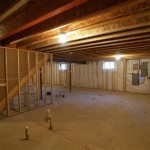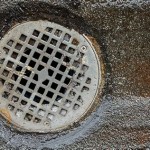How Much Does It Cost To Fix Water Damage In Basement?
Basement water damage is a common problem for homeowners, and understanding the potential costs associated with its remediation is crucial for budgeting and planning. The price to fix water damage in a basement can vary significantly depending on several factors, including the extent of the damage, the source of the water intrusion, the materials affected, and the geographical location.
A simple calculation or a single price cannot accurately represent the vast range of possible scenarios. It's essential to consider the different stages of repair, from water removal and drying to mold remediation and structural repairs, to gain a comprehensive understanding of the overall cost.
This article will delve into the various elements that contribute to the cost of fixing water damage in a basement, providing a detailed overview of what homeowners can expect to encounter when dealing with this frustrating issue.
Factors Influencing the Cost of Basement Water Damage Repair
Numerous factors influence the final cost of basement water damage repair. These elements can significantly increase or decrease the expenses incurred. Understanding these factors allows homeowners to better anticipate and manage the costs involved.
Extent of the damage: The most significant factor is the severity of the water damage. A small leak causing minor dampness will be far less expensive to fix than a major flood inundating the entire basement. The depth of the water, the area affected, and the length of time the water has been present all contribute to the extent of the damage.
Source of the water intrusion: The source of the water will impact the necessary repairs. A broken pipe, for example, might require plumbing repairs in addition to water extraction and drying. Similarly, groundwater seepage could necessitate exterior waterproofing measures, adding to the overall cost. Common sources include:
- Leaking pipes
- Sump pump failure
- Foundation cracks
- Poor drainage
- Sewer backups
- Storm flooding
Materials affected: The types of materials affected by the water will also influence the cost. Drywall, carpeting, and wood are highly susceptible to water damage and may require complete replacement. Concrete, while more resistant, can still suffer from cracks and efflorescence due to prolonged water exposure. Furthermore, personal belongings damaged by the water will contribute to the overall financial burden.
Mold growth: Water damage often leads to mold growth, which presents a health hazard and necessitates professional remediation. Mold remediation can be a significant expense, depending on the extent of the infestation and the type of mold present. Testing for mold is an important initial step and adds to the assessment costs. Some mold types are more dangerous than others and require more extensive and costly removal procedures.
Geographical location: Labor and material costs vary depending on the geographical location. Areas with a higher cost of living will generally have higher repair costs. The availability of qualified professionals in the area can also influence pricing.
Accessibility: The ease of access to the basement can also impact the cost. Basements with limited access may require more labor and specialized equipment, increasing the overall expenses.
Insurance coverage: While not directly influencing the repair cost, insurance coverage plays a crucial role in determining the out-of-pocket expenses for the homeowner. Understanding the scope of the insurance policy and the covered perils is essential. Standard homeowners insurance policies often cover water damage resulting from sudden and accidental events, such as burst pipes. However, they typically do not cover damage caused by flooding or neglect.
Breakdown of Costs Associated with Basement Water Damage Repair
To comprehensively understand the potential expenses, it's helpful to break down the costs associated with each stage of the repair process.
Water Removal and Extraction: The initial step involves removing standing water from the basement. This typically requires specialized equipment, such as submersible pumps and wet/dry vacuums. The cost for this service can range from $500 to $2,000 or more, depending on the volume of water. For significant flooding, especially involving sewage, the cost will be on the higher end of this range.
Drying and Dehumidification: After water extraction, the affected area needs to be thoroughly dried to prevent mold growth. This involves using industrial-strength dehumidifiers and air movers to reduce moisture levels. The cost for professional drying services can range from $500 to $1,500, depending on the size of the basement and the duration of the drying process. Monitoring moisture levels is important to ensure complete drying.
Mold Remediation: If mold is present, professional remediation is necessary. Mold remediation costs can vary significantly depending on the extent and type of mold. Minor mold growth may cost a few hundred dollars to remediate, while extensive infestations can cost several thousand dollars. The cost can range from $500 to $6,000 or more. The remediation process typically involves containment, removal, cleaning, and sanitization.
Repairing Damaged Materials: Replacing or repairing damaged materials is a significant expense. This can include:
- Drywall: Replacing water-damaged drywall can cost $2 to $5 per square foot, including materials and labor.
- Flooring: Replacing carpeting can cost $3 to $10 per square foot, while tile or laminate flooring can cost $5 to $15 per square foot.
- Wood: Repairing or replacing damaged wood framing or trim can cost $5 to $20 per linear foot.
- Insulation: Replacing wet insulation is crucial to prevent mold growth and improve energy efficiency. The cost can range from $1 to $3 per square foot.
Structural Repairs: If the water damage has compromised the structural integrity of the basement, structural repairs may be necessary. This can include repairing foundation cracks, reinforcing walls, or addressing drainage issues. Structural repairs can be costly, ranging from a few hundred dollars for minor cracks to several thousand dollars for more extensive damage. A structural engineer should assess the property before starting any structural repairs. This assessment will generally cost several hundred dollars.
Plumbing Repairs: If the water damage was caused by a plumbing issue, such as a burst pipe, plumbing repairs will be necessary. These costs can vary depending on the complexity of the repair and the plumber's hourly rate. Expect to pay between $100 and $500 for basic plumbing repairs, and significantly more for complex issues.
Exterior Waterproofing: To prevent future water damage, exterior waterproofing measures may be necessary. This can include:
- Grading: Improving the slope of the landscape to direct water away from the foundation.
- Gutter and downspout extensions: Redirecting rainwater away from the foundation.
- French drains: Installing a drainage system to collect and redirect groundwater.
- Waterproof membranes: Applying a waterproof coating to the exterior foundation walls.
Exterior waterproofing can range from several hundred dollars for simple grading adjustments to several thousand dollars for more extensive drainage systems. This is generally the most effective way to prevent water from entering the basement.
Content Restoration: The cost to restore or replace damaged personal belongings can vary significantly depending on the items affected. Sentimental value can also be a factor, but financial value is the main consideration for insurance purposes. Furniture, electronics, and personal items may need to be cleaned, repaired, or replaced. Many insurance policies cover the cost of content restoration or replacement, but it's important to review the policy details.
Cost-Saving Measures and Long-Term Prevention
While addressing basement water damage can be expensive, there are steps homeowners can take to minimize costs and prevent future occurrences.
Act quickly: The faster the water damage is addressed, the lower the overall cost will be. Prompt water extraction and drying can prevent mold growth and minimize the extent of the damage. Contacting professionals immediately after discovering water damage is advisable.
Get multiple quotes: Obtain quotes from several reputable contractors before hiring someone for the repair work. This allows for comparison of prices and services, ensuring the best value for the money. Verify that the contractors are licensed and insured.
Address the source: Identifying and addressing the source of the water intrusion is crucial to prevent future damage. This may involve repairing plumbing leaks, improving drainage, or addressing foundation cracks. Ignoring the source will result in recurring water damage and increased costs over time.
Install a sump pump: A sump pump can effectively remove groundwater that accumulates around the foundation. This is particularly important in areas with high water tables or poor drainage. Regularly inspect and maintain the sump pump to ensure it is functioning properly. A battery backup for the sump pump is recommended in case of power outages.
Maintain gutters and downspouts: Regularly clean gutters and downspouts to ensure proper drainage. Clogged gutters can cause water to overflow and accumulate around the foundation. Extend downspouts away from the foundation to direct water away from the basement walls.
Inspect the foundation: Regularly inspect the foundation for cracks or other signs of damage. Seal any cracks promptly to prevent water intrusion. Monitor the basement walls for signs of dampness or efflorescence, which can indicate water seepage.
Consider a dehumidifier: Running a dehumidifier in the basement can help maintain low humidity levels and prevent mold growth. This is particularly important in damp basements or after water damage has occurred. Empty the dehumidifier regularly to prevent overflow.
Improve ventilation: Ensure proper ventilation in the basement to reduce moisture buildup. Open windows or use exhaust fans to circulate air. Avoid storing items directly against the basement walls to allow for air circulation.
By taking proactive measures and addressing water damage promptly, homeowners can minimize the costs associated with basement water damage repair and protect their homes from future issues.

Average Basement Flooding Repair Costs By Labor Materials And More Forbes Home

Fixr Com Flooded Basement Cleanup Cost Flooding Restoration

How Much Does Basement Water Damage Repair Cost Articles321

Fixr Com Flooded Basement Cleanup Cost Flooding Restoration

Fixr Com Water Damage Restoration Cost To Repair

Fixr Com Basement Waterproofing Cost To Seal A

Average Basement Waterproofing Costs By Square Footage Layout And More Forbes Home

How Much Do Flood Damage Repairs Cost Homeserve Usa

Basement Water Damage What Does It Cost To Repair

Fixr Com Water Damage Restoration Cost To Repair
Related Posts







